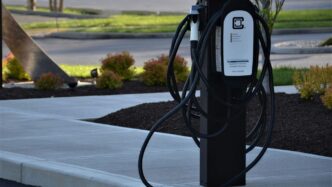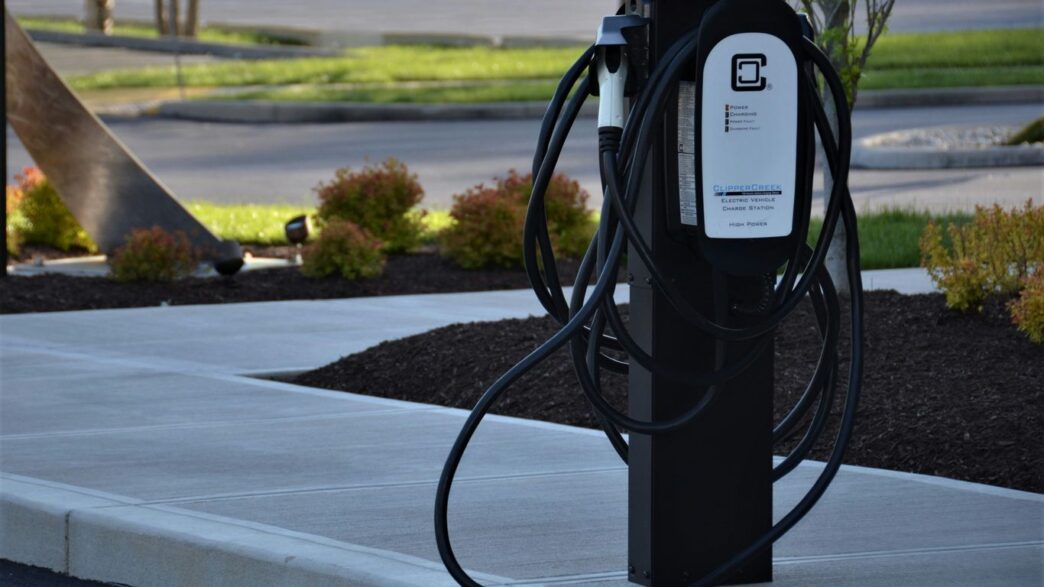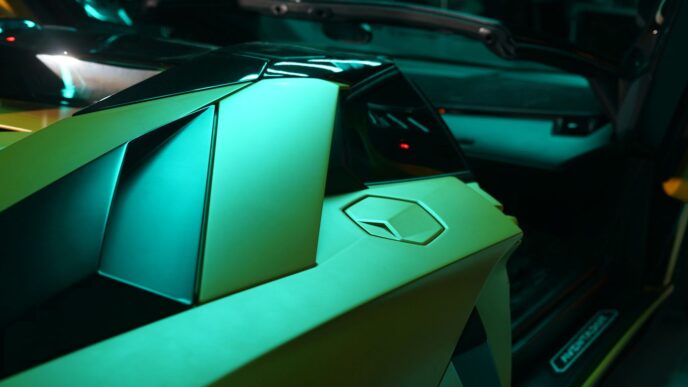So, you’re thinking about going electric but worried about the price tag? It’s a common thought. For a while there, electric cars seemed like a luxury item. But things are changing, fast. The market is getting way more competitive, and there are actually some pretty decent options out there that won’t break the bank. If you’re wondering ‘what is the cheapest electric car’ you can get your hands on in 2025, you’re in the right place. We’re going to break down what’s available, what’s coming, and how to make sure you get the best deal.
Key Takeaways
- The Nissan Leaf is often cited as the most budget-friendly new electric car for 2025, with a starting price that makes it accessible.
- Several other affordable EVs like the Fiat 500e and Hyundai Kona Electric offer good value, balancing price with features and range.
- Upcoming models and potential price drops in the near future suggest that electric car affordability will continue to improve.
- Federal tax credits, state incentives, and smart leasing options can significantly reduce the upfront cost of buying or leasing an electric vehicle.
- Don’t overlook the used electric car market, where models like the Chevy Bolt and Nissan Leaf can be found for much lower prices, offering substantial savings.
Understanding What is the Cheapest Electric Car
So, you’re looking to go electric but don’t want to break the bank? That’s totally understandable. The idea of an electric car often brings to mind fancy tech and high price tags, but the reality is getting more budget-friendly by the day. Finding the cheapest electric car isn’t just about the sticker price; it’s about the whole picture.
Defining the Most Affordable EV
When we talk about the "cheapest" electric car, we’re usually looking at the lowest Manufacturer’s Suggested Retail Price (MSRP) for a brand-new model. But that’s just the starting point. You’ve got to remember that this price often doesn’t include things like destination fees, taxes, or any optional extras you might want. Plus, there are government incentives and tax credits that can significantly lower the actual amount you pay out of pocket. So, the car with the lowest initial price might not always be the cheapest once all is said and done.
The Evolving EV Market Landscape
The electric vehicle market is changing super fast. Just a few years ago, your options for an affordable EV were pretty limited. Now, more car companies are jumping in, and they’re bringing a wider range of electric models with them. This increased competition is a good thing for buyers because it pushes prices down and encourages innovation. We’re seeing more smaller, city-focused EVs and even some more practical crossovers hitting the market at lower price points than we used to see.
Key Factors Influencing EV Pricing
Several things play a role in how much an electric car costs. The battery pack is a big one – it’s the most expensive component. As battery technology improves and production scales up, costs tend to decrease, which then lowers the car’s price. The size of the battery also affects range, so sometimes a cheaper EV might have a shorter range. Then there’s the brand and the features included. A more basic trim level will always be cheaper than a fully loaded one. Don’t forget about manufacturing location and supply chain costs, too. All these pieces fit together to determine the final price tag you see on the lot.
Here’s a look at some of the more budget-friendly options you might find:
| Vehicle Model | Base MSRP (Approx.) | Estimated Range (Miles) |
|---|---|---|
| Nissan Leaf S | $28,140 | 149 |
| Fiat 500e | $32,500 | 149 |
| Hyundai Kona Electric SE | $34,470 | 261 |
Exploring the Least Expensive New Electric Cars for 2025
Alright, let’s talk about getting into a new electric car without totally emptying your wallet. It feels like just yesterday electric cars were super expensive, but things are changing fast. For 2025, there are some genuinely affordable options hitting the market, making the switch to electric more realistic for more people. We’re looking at cars that balance cost with what you actually get, so you’re not just buying the cheapest thing available, but the best value.
Nissan Leaf: The Budget Champion
The Nissan Leaf has been a go-to for budget-conscious EV buyers for a while, and it looks like it’s holding strong for 2025. It’s not the flashiest car out there, but it gets the job done. The base model, the Leaf S, is often cited as one of the most affordable new EVs you can buy. It’s perfect for daily commutes and shorter trips. While its range might not compete with some of the newer, pricier models, it’s more than enough for many drivers’ daily needs. Plus, its long history means it’s a pretty well-understood vehicle, which can be a good thing when you’re looking for reliability.
Fiat 500e: Stylish City Commuter
If you’re looking for something with a bit more flair, the Fiat 500e is a strong contender. It’s a small, zippy car that’s ideal for navigating city streets and parking in tight spots. It brings a European design sensibility that many find appealing. While it’s compact, it doesn’t skimp on the electric experience. It’s a fun car to drive and offers a decent range for urban adventures. It might be a bit snug for families or long road trips, but for a solo commuter or a couple, it’s a really neat option that stands out from the crowd.
Hyundai Kona Electric: The All-Rounder
The Hyundai Kona Electric is another solid choice that offers a good mix of features, range, and price. It’s a small SUV, which means you get a bit more cargo space and a slightly higher driving position than you would in a smaller hatchback. The Kona Electric often gets praised for its comfortable ride and user-friendly tech. It usually offers a more competitive range than some of the absolute cheapest EVs, making it a bit more versatile if you occasionally need to go further afield. It really hits a sweet spot for people who want a practical electric car without a premium price tag.
Considering Upcoming Affordable Electric Vehicles
Emerging Models for 2026
The electric vehicle market is moving fast, and while we’ve got some solid budget options right now, the future looks even brighter for affordable EVs. Automakers are really starting to push out new models aimed at people who don’t want to spend a fortune. We’re seeing hints of what’s coming for 2026, and it’s pretty exciting. Think more choices, maybe even some surprises from brands we haven’t seen much in the budget space yet.
Potential Price Reductions
So, why are prices expected to drop? A big reason is that battery tech keeps getting better and cheaper to make. Plus, as more companies jump into the EV game, competition heats up, which usually means better deals for us buyers. It’s not just about the sticker price, either. Remember, EVs generally cost less to run over time because electricity is cheaper than gas, and they need less maintenance. The overall cost of ownership is a huge part of the affordability picture.
Future EV Affordability Trends
What can we expect down the road? More variety is a safe bet. We’ll likely see a wider range of body styles, from small city cars to more practical crossovers, all at lower price points. Automakers are also figuring out how to build EVs more efficiently, which should translate to lower manufacturing costs and, hopefully, lower prices for consumers. Keep an eye on manufacturers like Nissan, who have historically offered competitive pricing on their EVs, like the 2025 Nissan Leaf. It’s a good sign that the trend towards more accessible electric cars is here to stay.
Navigating Incentives and Savings for Budget EVs
So, you’ve found a few electric cars that fit your budget, which is great! But hold on, there might be even more ways to bring that price down. It’s not just about the sticker price; there are a bunch of incentives and savings out there that can make a big difference. Think of it like finding a coupon for something you were already going to buy – pretty sweet deal.
Federal Tax Credits and Rebates
The government wants more people to drive electric cars, so they’re offering some help. For certain new electric vehicles, you might be able to get a federal tax credit. This can be a significant chunk of change, sometimes up to $7,500. The cool thing is, for 2025, some of these credits can be applied as an upfront discount right at the dealership, which means you see the savings immediately instead of waiting to file your taxes. It’s definitely worth checking which specific models qualify, as not all EVs get the full credit. You can usually find this info on government websites or ask your dealer.
State and Local Incentives
Beyond the federal help, many states and even some cities have their own programs to encourage EV adoption. These can include rebates, sales tax exemptions, or even reduced registration fees. For example, if you live in California, you might be eligible for a state rebate that could save you a couple thousand dollars. These vary a lot by location, so it’s a good idea to do a quick search for "EV incentives [your state]" or "EV rebates [your city]". Sometimes, these local incentives can be combined with the federal ones, really stacking up the savings.
Leasing Advantages for Affordability
If buying outright still feels like a stretch, leasing an electric car can be a smart way to go. When you lease, the leasing company often qualifies for those federal tax credits, and they can pass those savings on to you. This can make the monthly payments much lower than if you were financing a purchase. Plus, leasing often covers the initial depreciation period, and you get to drive a new car every few years. Just be mindful of the mileage limits in your lease agreement to avoid extra charges down the road. It’s a different way to own a car, and for some, it’s the most budget-friendly path to driving electric.
Evaluating Used Electric Vehicle Options

So, you’re thinking about going electric but the sticker price on a brand-new one is making your eyes water? Totally understandable. That’s where the used EV market really shines. Buying a pre-owned electric car can be a smart way to get into EV ownership without breaking the bank. It’s a growing market, too, meaning more choices pop up all the time.
Finding Value in Pre-Owned EVs
When you look at used EVs, you’re often getting a lot of car for your money. Think about it: the biggest depreciation hit usually happens in the first few years. So, a car that was pricey when new might be a real bargain a few years down the line. Plus, EVs generally have fewer moving parts than gas cars, which can mean less to go wrong. That said, the battery is the big one, and its health is super important. A healthy battery should still hold most of its original range. You can often check this on the car’s dashboard display – compare the estimated range when fully charged to what it was when new. A good rule of thumb is that a 3-4 year old EV should still have about 85-95% of its original battery capacity.
Popular Budget-Friendly Used Models
If you’re looking for something with a decent range, say over 200 miles, you can often find models like the Chevrolet Bolt or the Nissan Leaf for around $20,000 or even less. These are great for daily commutes and errands. If you need a bit more range, maybe for longer trips, a used Tesla Model 3 can sometimes be found for around $25,000. These are solid choices that offer a good balance of range and features.
Here’s a quick look at some common budget-friendly used EVs:
- Nissan Leaf: Often one of the most affordable options, great for city driving.
- Chevrolet Bolt: Known for offering good range for its price point.
- Tesla Model 3: A popular choice if you can find one in your budget, offering good tech and range.
- Hyundai Kona Electric: A well-rounded option with a good mix of features and range.
Tips for Buying a Used Electric Car
Buying any used car requires a bit of homework, and used EVs are no different. Here are a few things to keep in mind:
- Check the Battery Health: As mentioned, this is key. Look at the dashboard’s range estimate and try to find out its original range. Some listings might even show battery health reports.
- Look for Warranties: See if the car is still under its original manufacturer warranty, especially for the battery. Some batteries have warranties that last 8 years or 100,000 miles, which can offer a lot of peace of mind.
- Consider Certified Pre-Owned (CPO): A CPO EV often comes with an inspection and an extended warranty, giving you extra confidence.
- Get a Vehicle History Report: Services like Carfax or AutoCheck can tell you if the car has been in any accidents or has a clean title.
- Inspect the Basics: Even though it’s electric, check the tires, wipers, and lights. These are simple things that can save you money on immediate repairs.
- Research Incentives: Believe it or not, some places offer tax credits or rebates for buying used EVs. It’s worth checking your local government’s website or resources like Coltura to see if you qualify for any savings.
Making the Right Choice: Factors Beyond Price
So, you’ve zeroed in on a few budget-friendly electric cars. That’s awesome! But hold on a sec, before you sign on the dotted line, let’s chat about a few things that aren’t just about the sticker price. Sometimes, the cheapest car upfront can end up costing you more down the road if you’re not careful.
Range Considerations for Budget EVs
Okay, let’s talk range. Cheaper EVs usually mean smaller batteries, and smaller batteries mean less driving distance on a single charge. For most people, just running errands or commuting to work, the range on these affordable options is probably just fine. Think about your daily drive. Do you need to go 300 miles on a whim, or is your typical trip more like 30 miles? It’s good to have a little extra range, though, just in case. You know, for those unexpected trips or if the weather gets really cold – batteries don’t perform as well when it’s freezing out. If you’re someone who loves hitting the open road or frequently takes long drives, spending a bit more for extra miles might actually give you more peace of mind.
Impact of Options and Upgrades
This is where things can get tricky. Those fancy alloy wheels might look cool, but they can add to the price and actually make your car use more energy, meaning less range. Some car companies even list different range estimates depending on the wheels you pick! And guess what? Bigger tires might cost more to replace when they wear out. Same goes for things like roof racks you might never use. They add drag and hurt your efficiency. It’s easy to get caught up in adding extras, but think about whether you really need them. Sometimes, the base model is the smartest choice for your wallet.
Long-Term Ownership Costs
Beyond the purchase price and those optional extras, think about what it costs to keep the car running year after year. EVs generally have lower running costs than gas cars because electricity is cheaper than gas, and there are fewer moving parts, meaning less maintenance. No oil changes, for starters! But still, consider things like tire wear, especially if you opt for performance tires. Also, think about charging. If you can charge at home overnight on a standard outlet, that’s usually the cheapest way. Public fast chargers can be convenient but add up. And remember those incentives we talked about? Make sure you’ve factored those in correctly, as they can significantly lower your overall cost. It’s all about looking at the big picture, not just the initial price tag.
Wrapping It Up
So, there you have it. Finding a cheap electric car in 2025 is definitely doable. We’ve seen that the prices are coming down, and there are more options than you might think, from the Nissan Leaf to other solid choices. Remember to look into those tax credits and local deals, because they can really make a difference in the final price. Whether you’re buying new, looking at used, or even considering a lease, doing your homework on what fits your budget and your driving needs is key. It’s a good time to think about going electric, and it’s great that there are more affordable ways to do it now.
Frequently Asked Questions
What’s the cheapest electric car you can buy right now?
The Nissan Leaf is often the most affordable new electric car you can find. Prices can change, but it’s usually a great starting point if you’re looking for a budget-friendly EV. Keep in mind that other models like the Fiat 500e and Hyundai Kona Electric are also very competitively priced.
Are electric cars really cheaper than gas cars?
While electric cars can sometimes cost more upfront than gas cars, they usually save you money in the long run. Electricity is typically cheaper than gasoline, and EVs have fewer moving parts, meaning less money spent on maintenance like oil changes. Over the life of the car, you can save quite a bit!
Do government incentives make electric cars cheaper?
Yes, definitely! The government offers tax credits and rebates that can significantly lower the price of buying an electric car. Some states and cities have their own special deals too. These savings can make a big difference in the final cost.
Are used electric cars a good deal?
Buying a used electric car can be a fantastic way to save money. Models like the Chevrolet Bolt or older Nissan Leafs can be found for much less than new ones. Just be sure to check the battery’s condition and see if it’s still under warranty.
How much range do cheap electric cars usually have?
The cheapest electric cars typically have a shorter driving range compared to more expensive models. You might find ranges around 150 miles, which is usually enough for daily commutes and errands. If you need to drive long distances often, you might need to consider a model with a longer range, which might cost a bit more.
What should I think about besides price when buying a cheap EV?
Besides the price tag, think about how much driving you do. Does the car have enough range for your daily trips? Also, consider any extra features or upgrades you might want, as these can add to the cost. Looking at the long-term costs, like potential repairs and charging, is also smart.














